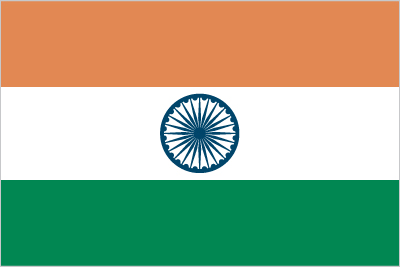Namaste! (Hello!) and Welcome to our Guide to Indian Culture, Business Practices and Etiquette

Our guide to India shines a light on the culture, customs, language, society, manners, etiquette and values - all helping you to understand the people!
What will you Learn in this Guide?
You will gain an understanding of a number of key areas including:
- Language
- Religion and beliefs
- Culture & society
- Social etiquette and customs
- Business culture and etiquette
Take a Sample of our e-Learning Course on India

If you want to learn about Indian culture at a greater depth, then click here to take a sample of our India cultural training e-Learning Course.
Skip to a section of scroll on to start:
- Facts and Statistics
- Language in India
- Indian Culture & Society
- Social Customs & Etiquette
- Business Culture & Practice
- Quizzes
- Buy an In-depth Expert Report
- Blogs on Indian Culture
STEREOTYPING
Remember this is only a very basic level introduction to Indian culture and the people; it can not account for the diversity within Indian society and is not meant in any way to stereotype all Indian people you may meet!
FACTS AND STATISTICS
- Location: Southern Asia, bordering the Arabian Sea and the Bay of Bengal, between Burma and Pakistan
- Capital: New Delhi
- National anthem: Jana Gana Mana (written in Bengali)
- Nationality: Indian
- Ethnic Make-up: Indo-Aryan 72%, Dravidian 25%, Mongoloid and other 3% (2000 Census)
- Population: 1.4 billion (2020 Est.)
- Population growth rate: 1.13%
- Climate: variable; tropical monsoon in south and temperate in north
- Time Zone: UTC + 5.30
- Currency: Indian Rupee
- Government: Federal Republic
- Internet penetration: 45% (2020 Est.)
- Business Culture: Ranked 49th in The Business Culture Complexity Index™

Navarathri Golu Dolls - Religion and spirituality are central to life in India. Photo by Vinoth Chandar on Flickr (CC BY 2.0)
LANGUAGE IN INDIA
As India is one of the world’s oldest cultures it has been subjected to a plethora of language influences.
The primary ones are; Hindi 41%, Bengali 8.1%, Telugu 7.2%, Marathi 7%, Tamil 5.9%, Urdu 5%, Gujarati 4.5%, Kannada 3.7%, Malayalam 3.2%, Oriya 3.2%, Punjabi 2.8%, Assamese 1.3%, Maithili 1.2%, other 5.9%. English is used primarily in business, and for economic and political purposes.
Language is regional and dialects play a role in the variety of languages spoken throughout India, with some sources suggesting that there are possibly 1,652 different languages or dialects. These come from four main linguistic families and are centred on different regions.
Local guides and translators may be beneficial if you are conducting meetings in a variety of locations throughout the country as the difference in language is ubiquitous.
INDIAN CULTURE & SOCIETY
Religion & Beliefs
- Hindu 79.8%, Muslim 14.2%, Christian 2.3%, Sikh 1.7%, other and unspecified 2% (2011 est.)
- India has the second largest Muslim population in the world
- Religious practises are an integral part of daily life
- From the Hindu culture arose three other major religions: Buddhism, Jainism and Sikhism.
- Hinduism has long established roots in India dating from 2000-1500 B.C.E
- In Hinduism there is no single founder, specific theological system, or central religious structure
- Vedas and Upanishads are the holy books of Hinduism
- Hinduism teaches meditation, yoga and ascetic practices to cultivate self-discipline and unity
- The cow is considered a sacred animal
Major Celebrations/Secular Celebrations
- 26th January (Republic Day)
- 15th August (Independence Day)
- 2nd October (Gandhi Jayanti; Mahatma Gandhi's Birthday)
- Diwali – October/November
- Holi – March, to celebrate Spring
The Family
- Family values are highly respected throughout India and are fundamental in daily life
- The structure of the family is patriarchal; a woman must obey her father, her husband, her son.
- Arranged marriages are commonplace
- The urban middle-class population of India have begun to move away from arranged marriages
- Families often live with three or four generations in the same household
- Traditionally sons inherit and daughters receive a dowry
- Child care is provided by the female family members
Social Stratification
- India has one of the world’s oldest caste systems
- The caste structure divides people into four main groups: Brahmins, Kshatriyas, Vaishyas and Shudras
- Brahmins, the teachers and intellectuals - Brahma's head. Kshatriyas, the warriors and rulers – Brahma’s arms. Vaishyas, the traders - Brahma’s thighs, and finally, Shudras, the menial workers - Brahma's feet
- There can be as many as thirty castes within one village
- Intermarrying between castes was forbidden but in urban areas is now more common
- Your caste is set by birth
Hierarchy is important in Indian culture, from the family up to the company boardroom. Photo by Claudette Bleijenberg on Unsplash
Gender Roles
- Mothers, grandmothers and older siblings care for infants
- Patriarchal families are the norm
- Women are considered to hold secondary positions within the home and workplace
- 82.14% of males and 65.46% of females are literate (2011 census)
- Women often receive little schooling
- Divorce and inheritance laws are male-dominated
Socialisation
- Until the child is two, the mother or grandmother is the primary caregiver
- Once the child is two, older sisters are the primary caregivers
- Sons are generally given better opportunities and receive a superior education
- Gender-specific roles are encouraged within the family unit and in wider society
Economy
- The Indian economy is one of the fastest growing in the world
- Indian labour force is estimated at 509.3 million
- 60% are employed in agriculture or related industries
- India has established Special Economic Zones to encourage and support business
- India's long-term growth is considered moderately positive due to a young population and corresponding low dependency ratio, healthy savings and investment rates
- GDP 7.6% (2016 Est.)
Food
- Food in India is often served on a ‘thali’ – a tray or plate that can hold several dishes
- ‘Curry’ is a European term to describe the spicy dishes found in India
- In some parts of India meals are eaten with rice (chawal), in others, flat breads (roti) are preferred
- Food is infused with spices such as cumin, turmeric, black pepper, cardamom, cloves and coriander
- Most Hindus avoid eating beef
Arts, Humanities & Popular Culture
- The Indian culture has absorbed and amalgamated many different customs and ideas throughout its long history which has led to a rich tradition and folk culture
- The most popular musical instrument in India is the sitar, an instrument similar to a guitar
- India is well regarded for its rugs, craft, metalwork, bronzes, stone carving, pottery, woodwork, and jewellery.
- Traditional sports include camel racing and cock fighting
- Folk dances are regional and often celebrated during festivals
- ‘Bollywood’ is the informal name given to the popular Mumbai-based film industry
- Bollywood has the largest output in the world in terms of number of films produced and, possibly, number of tickets sold.
Thali is the staple of Indian food - bread with various curries and chutneys. Photo by Gayatri Malhotra on Unsplash
INDIAN SOCIAL CUSTOMS & PROTOCOL
Naming conventions
- Due to India’s diverse cultural groups there is variance between regions on naming conventions
- If in doubt, ask! This is likely to cause least offence
- It is generally safe to address an elder as ‘sir’ or ‘Ma’am’
- Indians generally have a ‘given’ name – a name they use at work or for people they are not overly familiar with
- Many people in India also have a ‘pet’ name – a nickname for family and close friends
- Often you will find that an older female is refers to as ‘auntie’, even if unrelated
- Younger males are often called ‘little brother’
- Family names, or surnames often denote the caste or area that an individual originates from –these can have a suffix that denotes the type of their ancestor’s trade
- Indians may also use a different religious name
- Many Muslims do not have surnames. Instead, men add the father's name to their own name with the connector 'bin'. For example, Abdullah bin Ahmed is Abdullah the son of Ahmad
- Sikhs all use the name Singh. It is either adopted as a surname or as a connector name to the surname
Meeting & Greeting
- In India it’s traditional to greet people using ‘Namaste’ – place both hands together and bow slightly. In urban areas this is often overlooked
- Men will often also shake hands when meeting or leaving
- Men should not attempt to shake hands with women
- Some Indian women might shake hands with a western woman
- Indian culture is based on a hierarchical system so elders and superior are greeted first
- Religion, caste and social standing all effect greetings
Namaste. Photo by jaikishan patel on Unsplash
Communication style
- Avoid standing too close to others
- Communication may not be straightforward – you may have to read between the lines and interpret gestures/signs
- Differing relationships will determine how people interact with each other – watch what others do
- Indian men may often pat each other on the back as a sign of friendship
- Some gestures can be easily misinterpreted – a western hand wave from side to side can mean ‘no’ or ‘go-away’ in India
- If an Indian says ‘I will try’ this can usually be interpreted as ‘no’
- On the whole, Indian people dislike to refuse something, or someone, outright
- Use your right hand to touch, accept or give something
- Do not beckon with your hand or snap your fingers – instead, with your arm extended, curl your fingers downward in a claw motion
- Pointing, with either one or two fingers, is considered rude and used for inferiors only
- Chins, thumbs and entire hands are used to point or direct someone’s attention
- When a head is jerked back, or moved in a figure of eight, this usually means ‘yes’
If you're really interested in learning about the Indian communication style, why not learn more by watching Indian TV shows?
Check out this blog on the 3 Best Netflix Shows to Learn About Indian Culture
Personal Space
- Refrain from standing within an arm’s length of others
- Do not touch others on their head
- Public displays of affection are not encouraged
- Feet are considered unclean (this also applies to the left hand) so avoid touching another’s foot (apologise immediately if this is accidental)
Gift Giving
- Gifts are not usually given at the first meeting
- Once the relationship has developed gifts may be exchanged
- Personal gifts are appreciated- especially if from your own country
- Give and receive gifts with both hands – never just the left as it is considered unclean
- Generally, gifts are not opened in the company of the benefactor
- Avoid giving black or white gifts; black denotes anger, evil and negativity, while white is reserved for funerals and mourning
- Instead choose red, blue or green for a gift or wrappings
- Avoid gifts that are made from leather or pig skin
Dining & Food
- Many strict Muslims, and Hindu women, do not drink alcohol
- You may be invited to wash your hands before eating
- Food is often eaten with the right hand
- Guests are generally served in a hierarchical order; guest of honour, men and then children (Women may eat later)
- Meals often end with a variety of sweets (paan), betel nut served with lime and wrapped in a betel leaf
- A host will always serve their guests. Accept whatever you are offered but don’t feel obliged to finish everything on your plate
- If food is placed in communal dishes for you to help yourself, always use a spoon
- Breads can be used to scoop up food
- Reciprocate your invitation to dine with one of a comparable value
- In a restaurant the host will generally pay the bill
Cows are sacred to Hindus. As a result you should avoid leather gifts or giving food containing beef or derivatives. Photo by Monthaye on Unsplash
Visiting a home
- Always accept an invitation to dine, unless you have a plausible reason for not attending
- Give the hosts and their children ‘thank you’ gifts, although this is not always expected
- It is acceptable to arrive up to thirty minutes later than the stated time
- Flower garlands may be placed around your neck – this can be removed after a few minutes but should be retained in your hand for a time
- Shoes are rarely worn inside an Indian home – watch your host and other guests if unsure, and make certain your socks are clean!
- Ask permission from your host to smoke. Smoking in the presence of elders is considered rude
- Apologise if your feet or shoes touch another person
Taboos
- Do not touch another person with your feet or shoes
- Do not show anger
- Do not use public displays of affection
- Winking and whistling should be avoided
- Ears are considered sacred – do not box or pull on another’s ears
- Read more about taboos in India here.
INDIAN BUSINESS CULTURE, PRACTICES & ETIQUETTE
If you work with Indians and want expert, customized guidance on how to navigate the business culture, then click here to learn about our India cultural awareness webinars.
India is a rapidly growing marketplace that is tipped to be one of the largest economies in the world in the near future. Ensure your business etiquette, and knowledge of their culture, is accurate to maximise your potential and avoid unnecessary awkwardness.
Business in India can be viewed as a reflection of society; hierarchical structures pervade business and culture, with the result being that strong individuals are leaders in business and their control is unquestioned by those lower on the chain of command.
To be successful when dealing with Indian business people, or conducting business in the country itself, it is worth considering this structure and ensuring that you are dealing with the decision makers so as to avoid prolonging the conclusion.
Relationships are the basis of all business dealings in India, be prepared to invest time and effort into building a solid foundation from which your commerce will grow.
What to wear
- Conservative dress is most suitable for both men and women
- Dark suits for men - in hotter regions it can be acceptable to dress less formally
- For women, conservative dresses or business suits, but avoid showing too much leg if wearing skirts or dresses
- Casual wear is not recommended for a first meeting
Titles
- Address people by their professional title (Dr, professor etc.) or, Mr or Mrs, followed by their surname
- Wait until invited to address someone by their first name, or preferred name
- If in doubt, use the suffix Mr or Mrs, especially when addressing elders. Sir or Madam is also appropriate
- Remember, status is dependent upon education, caste, age and profession - address people accordingly if possible
Business cards
- Business cards may be given after the initial handshakes and greetings
- Give and receive cards with your right hand
- Higher educational degrees are a symbol of status – remember to put this on your business card
- Give cards face up so that they can be easily read
- As business is often conducted in English it is unnecessary to translate one side of your card
Business meetings in India focus both on tasks as well as relationships. Photo by Smartworks Coworking on Unsplash
Meetings
- Plan and organise meetings well in advance of your trip, if travelling long distances, as they may often be postponed. Check again before travelling
- Be punctual – this shows respect and integrity
- Business meetings often begin with small talk
- This may continue for an extended time as Indians prefer doing business when they are familiar with someone
- Ask your hosts personal questions; family, marriage, education and sport are good starting points. Avoid politics, religion and the caste system
- If unsure on any matter, defer to the senior person in the room as they will generally control the final decision
- Follow up meetings with an overview of discussions and decisions
Negotiating
- Saying ‘no’ is too direct and confrontational for many Indians.
- Instead they will often say ‘maybe’ or ‘I’m not sure’. If this occurs change tack or rephrase question if possible
- Avoid any hard sell or appearing too demanding – Indians prefer harmony and respect
- Having said that, they can also bargain and will often barter for what they want
- Do not be tempted to show impatience or anger. Remain calm throughout the negotiating process
- Your interactions with your own countrymen will be monitored – try not to disagree publicly
- Final decisions will be made by the most senior person present and may take time – be patient
- Read more about the Indian negotiation style
Management
- The caste system is still very much in evidence in the Indian business world
- Remain aware of superiors and treat them accordingly
- Indian society is built upon close familial relationships which can cross over into the business world. Be aware of ties that run through the business you are dealing with
- A paternalistic approach is often taken by managers in India due to hierarchical structures
- Managers will make decisions but they are also responsible for those below them within the business’ structure
- For more information please visit Being a Manager in India
Thank you for reading our guide to India.
We hope you found it useful.
If you have anything to add to our country profile please contact us using the form below, as we are keen to ensure accuracy.
Buy an In-Depth Insight Report for India
For those needing a more detailed and comprehensive overview of India we have published an expert Report on Indian Society, Culture & Business.

The 42-page document has been authored by one of our India country specialists and provides readers with much more detail that our free guide above. Topics include:
- An introduction to the country, its history, politics, people and culture
- Insights into the country’s values, customs and etiquette
- Tips on preparing to work with new colleagues from India
- Expat-orientated information on daily life
- Guidelines and tools on adapting and dealing with cultural differences
All for only $7.
Order via the button below to receive your India Insight via or read more about it here before buying!
Quiz: Test Your Knowledge of Indian Culture!
Take the Culture Vulture's Quiz on Doing Business in India and see how much you have learnt about the country, its people and culture.
If you can score above 80% then you know your stuff!
Further Reading on Indian Culture
Below are some of our blogs which look at India:
- Understanding the Culture is Key to Successful Business in India
- Why India is Becoming a Top Expat Destination
- Is Anglo-Indian culture fading into oblivion?
- Inside Indian Culture: Tips on Doing Business in India
- Cultural differences when working with Indians
- What Can Google Search Teach Us About Indian Culture?
- How Can I Make a Good Impression in India?
- Why do Indians Nod their Heads When Speaking?
- The Essential Guide to Indian Business Etiquette

 +44 0330 027 0207 or +1 (818) 532-6908
+44 0330 027 0207 or +1 (818) 532-6908








